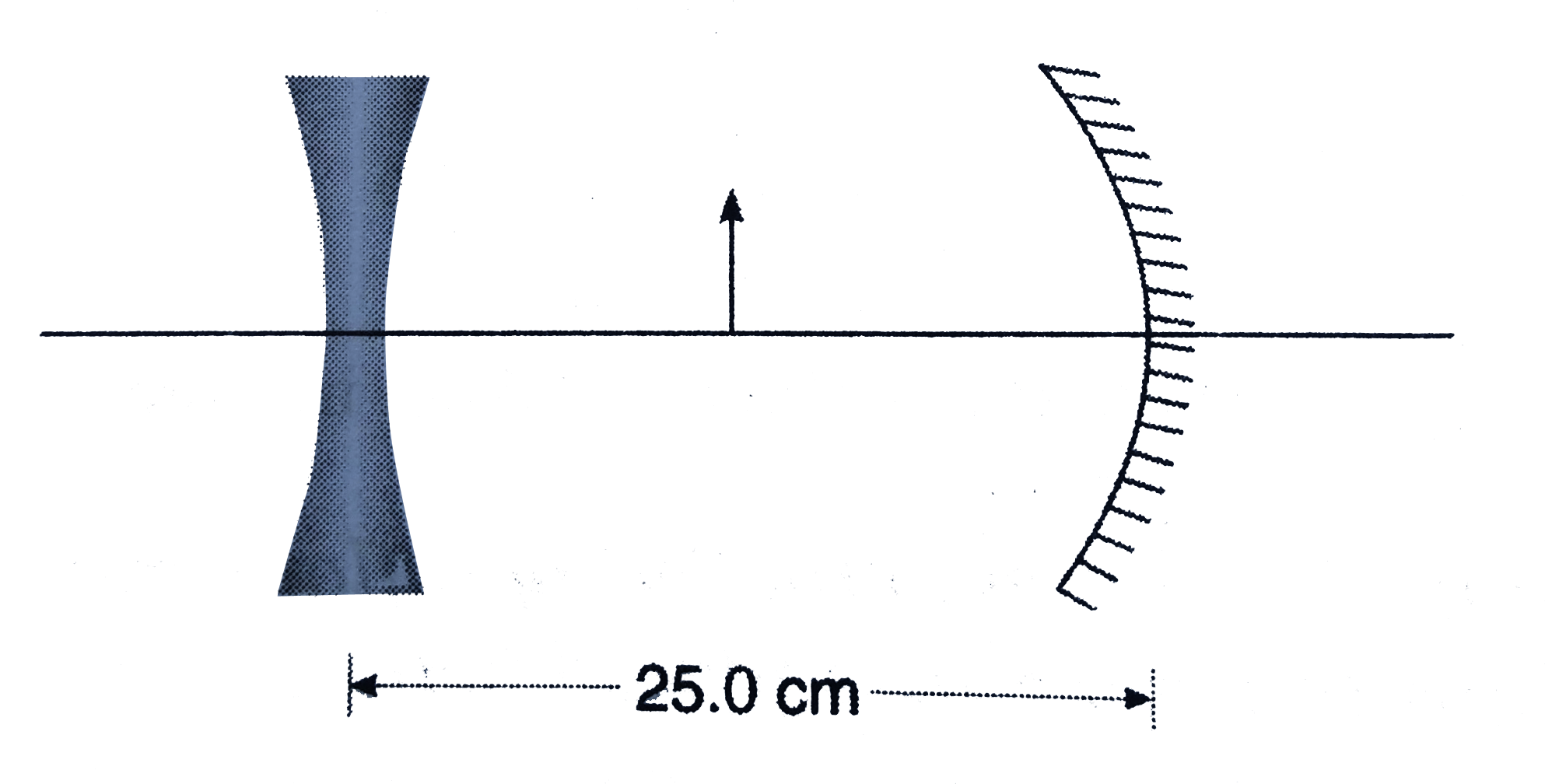Complete Solutions to Solved Example of chapter REFRACTION OF LIGHT of Class 12 book with complete answers and questions
| Class 12 | PHYSICS |
| Chapter | REFRACTION OF LIGHT |
| DC PANDEY | Solved Example |
| Number Of Questions | 15 |
| Academic Year | 2023-24 |
A spherical convex surface separates object and image space of refractive index `1.0 and 4/3.` If radius of curvature of the surface is `10cm,` find its power.
View SolutionA ray of light is incident at an angle of `60^@` on the face of a prism having refracting angle `30^@.` The ray emerging out of the prism makes an angle `30^@` with the incident ray. Show that the emergent ray is perpendicular to the face through which it emerges.
View SolutionThe angle of minimum deviation for a glass prism with `mu=sqrt3` equals the refracting angle of the prism. What is the angle of the prism?
View SolutionThe distance between two point sources of light is `24cm.` Find out where would you place a converging lens of focal length `9cm,` so that the images of both the sources are formed at the same point.
View SolutionA source of light is located at double focal length from a convergent lens. The focal length of the lens is `f=30cm.` At what distance from the lens should a flat mirror be placed, so that the rays reflected from the mirror are parallel after passing through the lens for the second time?
View SolutionTwo equi-convex lenses of focal length `30cm` and `70cm,` made of material of refractive index`=1.5,` are held in contact coaxially by a rubber band round their edges.A liquidof refractive index `1.3` is introduced in the space between the lenses filling it completely. Find the position of the image of a luminous point object placed on teh axis of the combination lens at a distance of `90cm` from it.
View SolutionTwo thin converging lenses are placed on a common axis, so that the centre of one of them coincides with the focus of the other. An object is placed at a distance twice the focal length from the left hand lens. Where will its image be? What is the lateral magnification? The focal of each lens is f.
View SolutionThe refracting angle of a glass prism is `30^@.` A ray is incident onto one of the faces perpendicular to it. Find the angle `delta` between the incident ray and the ray that leaves the prism. The refractive index of glass is `mu=1.5.`
View SolutionA biconvex thin lens is prepared from glass of refractive index `3//2.` The two bounding surfaces have equal radii of `25cm` each. One of the surfaces is silvered from outside to make it reflecting. Where should an object be placed before this lens so that the image coincides with the object.
View SolutionAn object is `5.0 m` to the left of a flat screen. A converging lens for which the focal length is `f=0.8 m` is placed between object and screen.
(a) Show that two lens positions exist that form images on the screen and deremine how far these positions are from the object?
(b) How do the two images differ from each other?
View SolutionAn object is midway between the lens and the mirror as shown. The mirror's radius of curvature is 20.0 cm and the lens has a focal length of -16.7 cm, Considering only the rays that leaves the object and travels first towards the mirror, locate the final image formed by this system. Is this image real or virtual? Is it upright or inverted? What is the overall magnificaiton?

View SolutionAn object is placed `12 cm` to the left of a diverging lens of focal length `-6.0 cm.` A converging lens with a focal length of `12.0 cm` is placed at a distance d to the right of the diverging lens. Find the distance d that corresponds to a final image at infinity.
View SolutionA solid glass sphere with radius R and an index of refraction `1.5` is silvered over one hemisphere. A small object is located on the axis of the sphere at a distance 2R to the left of the vertex of the unsilvered hemisphere. Find the position of final image after all refractions and reflection have taken place.
View SolutionA converging lens forms a five fold magnified image of an object. The screen is moved towards the object by a distance `d=0.5 m,` and the lens is shifted so that the image has the same size as the object. Find the power of lens and the initial distance between the object and the screen.
View SolutionSurfaces of a thin equi-convex glass lens have radius of curvature R. Paraxial rays are incident on it . If the final image is formed after n internal reflections, calculate distance of this image from pole of the lens. Refractive index of glass is `mu`.
View Solution
Solved Example questions and complete solutions for chapter REFRACTION OF LIGHT of DC PANDEY ENGLISH of Class 12
All Exercises from DC PANDEY Class 12 PHYSICS REFRACTION OF LIGHT
- Example
- Example Type 10
- Example Type 11
- Exercise 31.1
- Exercise 31.2
- Exercise 31.4
- Exercise 31.5
- Exercise 31.6
- Exercise 31.7
- Exercise 31.8
- Introductory exercise
- Level 1 Assertion And Reason
- Level 1 Objective
- Level 1 Subjective
- Level 2 Comprehension Based
- Level 2 More Than One Correct
- Level 2 Single Correct
- Level 2 Subjective
- more than one correct option
- Objective Questions
- Single Correct Option
- Solved Example
- Subjective Questions